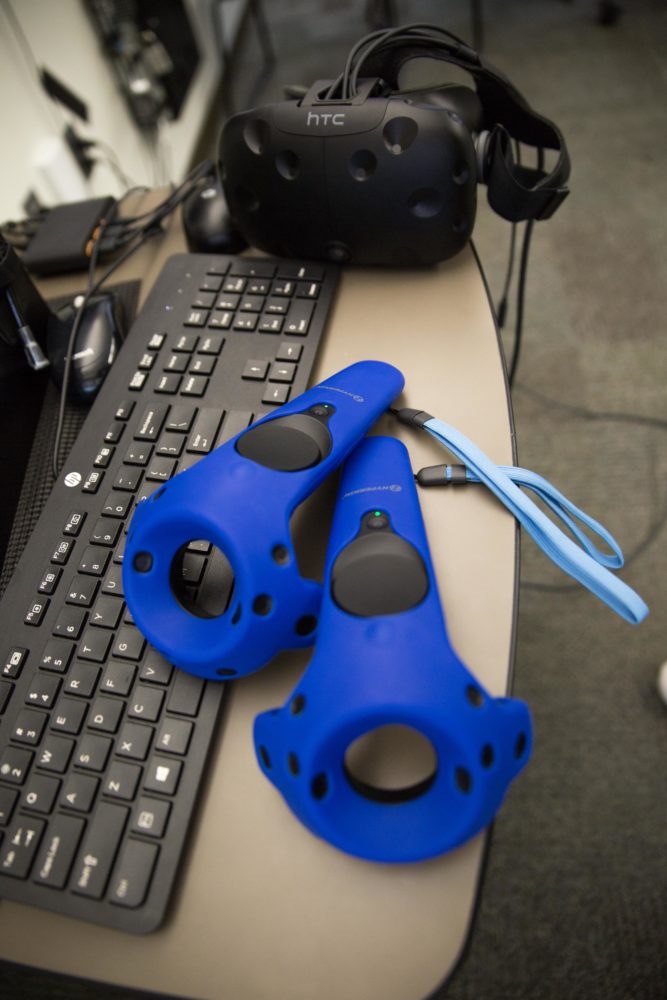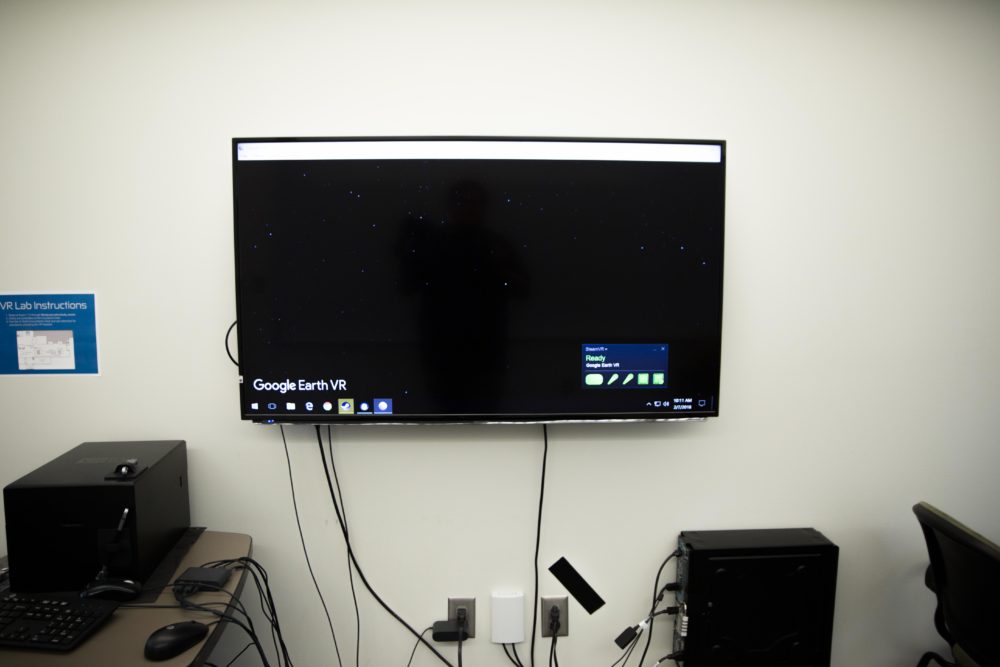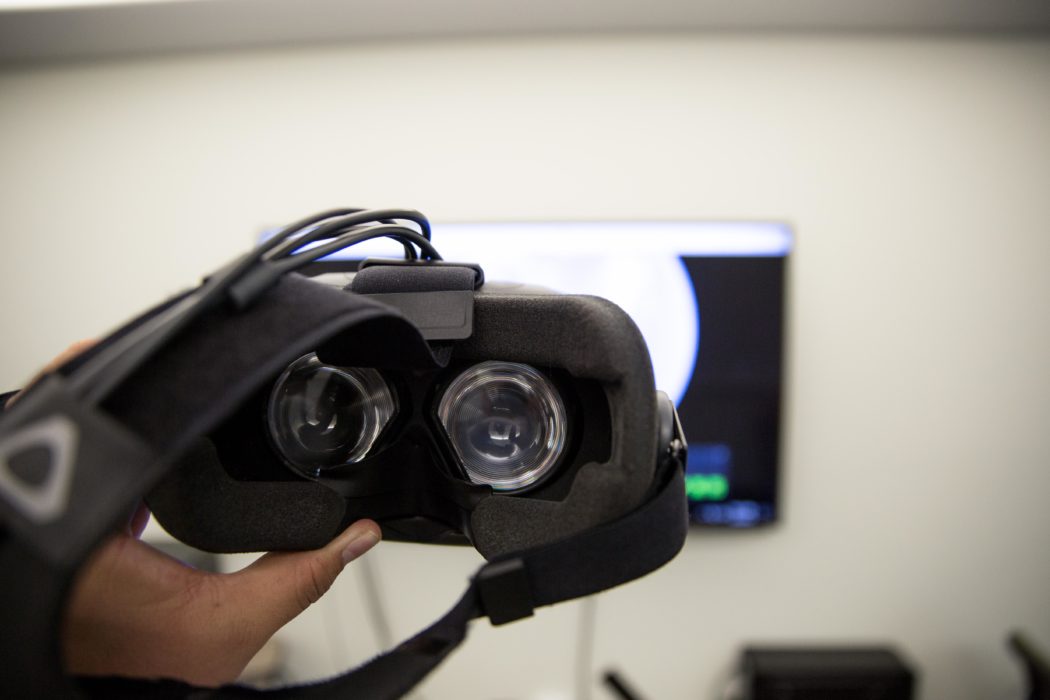USU library offers VR programs for students to use
The Merrill-Cazier Library on campus offers a free-to-use virtual reality set for students to check out for up to two hours a day.
There are more than 40 applications to play with, including games, cinematics, and interactive learning experiences. The program has been put together by the Academic and Instructional Service, IT Computer Labs and the Library.
Games such as “Richie’s Plank Experience” and “The Lab” offer a wide variety of experiences and levels of interaction.
“It was super fun and felt real. It gave me the same kind of thrill as a rollercoaster,” said Jaydin Lowry, a freshman at Utah State testing “Richie’s Plank Experience.”
Virtual reality offers something that conventional games and learning environments struggle to bring to the table: hands-on experience.
 Kyle Todecheene
Kyle Todecheene Virtual Reality system avaiable at the Merrill Crazier Library for students. (Kyle Todecheene)
There are programs that are enhanced learning experiences designed for visual learners that have been developed and are currently in development such as “Calcflow,” a math oriented program that allows users to interact in a 3D world with models one would typically see on a 2D graphing calculator.
“In a 3D VR environment a student can travel and walk through space, travel anywhere in the world, interact at the molecular level, go inside the human body, create life-size 3D architecture objects, swim with ocean life at 20,000 ft. below sea level and many other lifelike experiences,” said Todd Hugie, director of Library Information Technology and Building Services.
USU student Brad Betley, believes VR programs could be used in classes within a few years for teaching and studying techniques. For example, “Organon Anatomy,” allows students to look at different parts of the body and dissect them, learn about them and reconstruct the body part.
“It was amazing that we could actually interact with the heart in a virtual reality environment. It was super interactive,” Betley said.
Hugie said the technology is not only being invested into by casual consumers and companies like HTC and Oculus, there are hundreds of billions of dollars being put into the development of virtual reality by big corporations such as Samsung and Apple.
“In the near future we will see multiple headsets being connected to the same ‘reality’ similar to co-op games. This could allow for entire classrooms to participate in the same program together,” said Hugie.
 Kyle Todecheene
Kyle Todecheene Virtual Reality system avaiable at the Merrill Crazier Library for students. (Kyle Todecheene)
Virtual reality is also changing how people can experience history.
“Apollo 11 VR” is a cinematic or interactive experience (depending on what is chosen) that drops the player into the shoes of an astronaut on the Apollo 11 mission from takeoff to landing, paving a new road for how students learn about historical events.
“I can see how interactive learners succeed in any subject due to the capabilities of VR to create representations of anything and create experiences that are hard to replicate in real life,” Betley said.
The library plans on adopting more virtual reality headsets and testing more technology in the future depending on the success of the VR Lab. Students can reserve room 113 in the Merrill-Cazier library to test the virtual reality set and any of the the apps provided by the Library for themselves via the study rooms tab on the Library’s website.
— Kylef217@gmail.com
@Kylelele_

